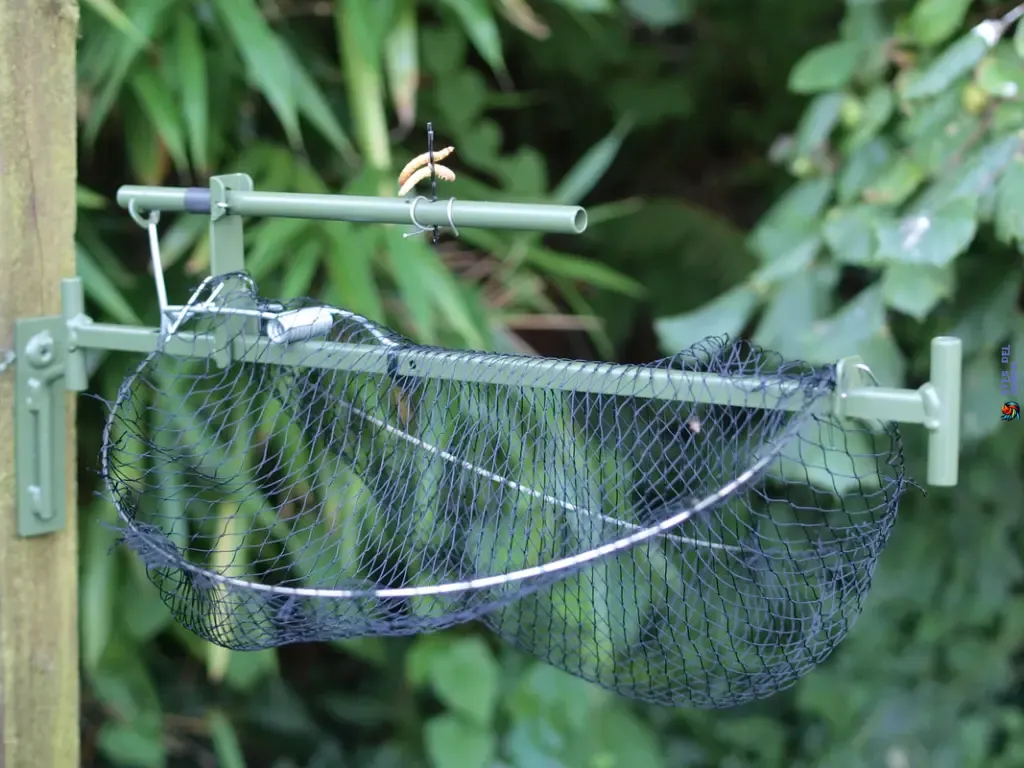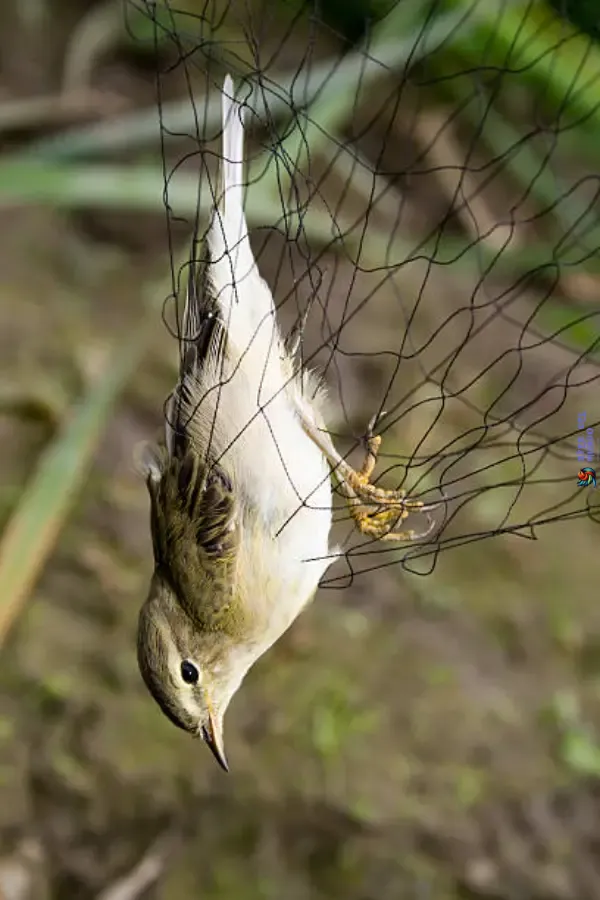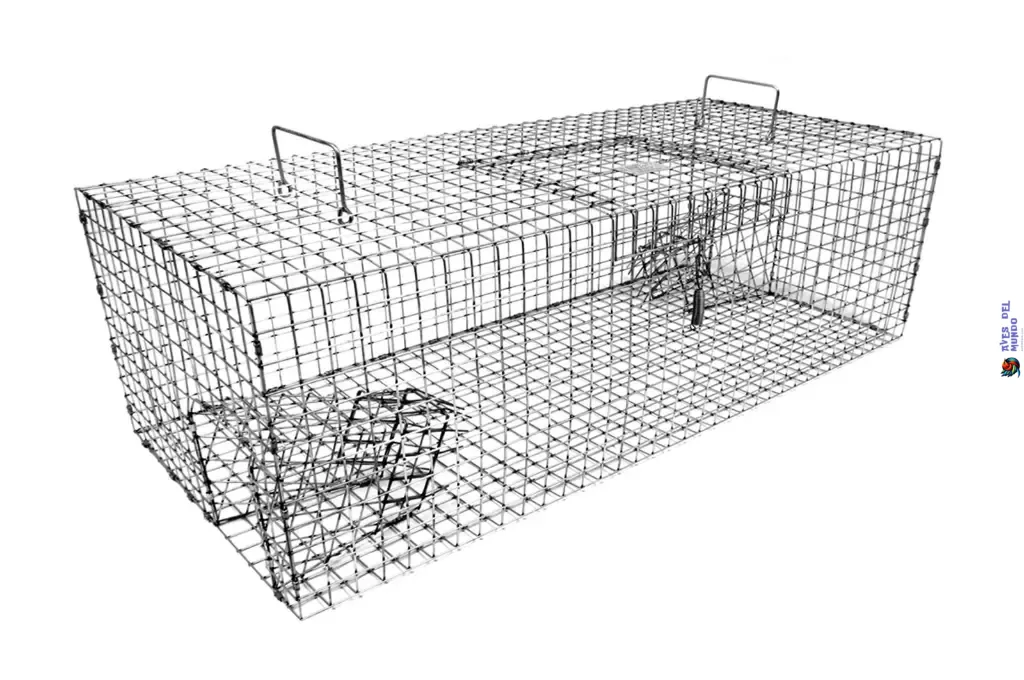Traps for Catching Birds
When it comes to catching birds, there are various types of traps that can be used depending on the specific species you are targeting and the purpose of the trapping. One commonly used trap for catching birds is the mist net.
Mist nets are made of fine, almost invisible mesh and are used to capture birds in flight. They are commonly used by researchers and bird banders to safely capture and study birds without causing harm.

Another type of trap used for catching birds is the cage trap. Cage traps are typically made of wire mesh and have a spring-loaded door that closes behind the bird once it enters the trap. These traps are often used by pest control professionals to capture nuisance birds that may be causing damage or posing a threat to property.
There are also traps specifically designed for catching certain bird species, such as sparrows or starlings, which we will discuss further in the following sections.
One such trap designed for catching sparrows is the funnel trap. This trap consists of a funnel-shaped entrance that leads into a cage or holding area. Sparrows are attracted to the bait placed inside the trap and enter through the narrow opening of the funnel. Once inside, it becomes difficult for them to find their way out, allowing for easy capture.
For capturing starlings, a common trap used is the baited ground trap. This trap is set up on the ground and baited with food or other attractants that starlings find irresistible. The trap is designed in a way that allows the birds to enter easily but makes it challenging for them to escape. Once the starlings enter the trap, they are unable to fly out, and they can be safely captured.
It is important to note that when using traps to catch birds, it is crucial to follow local regulations and guidelines to ensure the ethical and humane treatment of the birds. Traps should be checked regularly to minimize stress and potential harm to the captured birds.
Best Bait for Catching Birds
When it comes to baiting traps for catching birds, the choice of bait can vary depending on the species you are targeting. Different birds are attracted to different types of food, so it’s important to use bait that will entice the specific species you are trying to catch.

One commonly used bait for attracting birds is birdseed. Many species of birds, including sparrows and starlings, are attracted to birdseed and will be more likely to enter a trap that contains it. Birdseed is readily available in stores and can be easily scattered around the trap to create a trail leading to the entrance. It is important to select a high-quality birdseed mix that is specifically formulated for the types of birds you are trying to catch.

In addition to birdseed, other types of food can also be used as bait. Bread crumbs are a popular choice, especially for ground-feeding birds such as pigeons and doves. These birds are accustomed to finding food on the ground, so scattering bread crumbs around the trap can be an effective way to lure them inside. Suet, which is a high-energy food made from animal fat and mixed with seeds or insects, is another option that can attract a wide range of bird species.
For more specialized trapping, live bait can be used. Mealworms, for example, are a favorite food of many insect-eating birds like bluebirds and robins. Placing a small dish of live mealworms inside the trap can be highly enticing to these birds, as the movement and scent of the worms mimic their natural prey. However, it’s important to ensure that the live bait is sourced ethically and that the birds are not harmed in the process.
It’s important to note that when using bait to attract birds into traps, it’s essential to comply with local regulations and ethical considerations. Before setting up any traps, it’s crucial to research and understand the laws and regulations regarding bird trapping in your area. In some cases, a permit may be required, especially if the trapping is being done for scientific research purposes. It’s also important to consider the welfare of the birds and to ensure that the trapping is done for legitimate purposes, such as research or pest control, and not for illegal activities or harm to the birds.
Best Trap for Sparrows

Sparrows are small, agile birds that can be challenging to trap. However, there are specific traps that are commonly used for catching sparrows effectively.
One commonly used trap for sparrows is the multi-catch sparrow trap. This trap is designed to capture multiple sparrows at once and is often used in situations where sparrows are causing damage or posing a threat to crops, gardens, or other property. The trap typically consists of a wire cage with multiple entry points and a mechanism that allows the sparrows to enter but not exit.
Another effective trap for sparrows is the funnel trap. This trap is designed to lure sparrows into a funnel-shaped enclosure, making it difficult for them to find their way out. The funnel trap is often baited with birdseed or other food that sparrows are attracted to.
However, it’s important to note that simply setting up a trap is not enough to effectively catch sparrows. To increase the chances of success, it is crucial to understand the behavior and habits of sparrows. Sparrows are social birds that typically travel in flocks, so placing traps in areas where sparrows are known to congregate can significantly improve the trapping results.
Additionally, it is essential to regularly check the traps to ensure that captured sparrows are promptly removed. Sparrows are resilient creatures and can cause harm to themselves or other trapped birds if left unattended for too long. Therefore, frequent monitoring of the traps is necessary to ensure the humane treatment of the trapped sparrows.
Furthermore, it’s important to comply with local regulations and obtain any necessary permits or permissions when trapping sparrows. Sparrows are considered invasive species in some regions, and trapping them may be subject to specific rules and regulations. These regulations are in place to protect native bird species and prevent any unintended ecological consequences.
In conclusion, while there are effective traps available for catching sparrows, it is essential to understand their behavior, place the traps strategically, and comply with local regulations. By doing so, individuals can successfully control sparrow populations and mitigate any potential damage or threats they may pose.
Trapping Starlings

Starlings are highly adaptable birds known for their flocking behavior and ability to cause damage to crops and property. Trapping starlings can be an effective method of controlling their population and minimizing the damage they may cause.
One commonly used trap for starlings is the funnel trap. This trap is designed to lure starlings into a funnel-shaped enclosure, making it difficult for them to find their way out. The funnel trap is often baited with food that starlings are attracted to, such as suet or birdseed.
Another effective trap for starlings is the cage trap. Cage traps with multiple entry points can be strategically placed in areas where starlings are known to gather, such as roosting sites or feeding areas. These traps can be baited with food to attract the starlings and then capture them once they enter the trap.
However, it’s important to note that trapping starlings should be done in accordance with local regulations and guidelines. In some regions, starlings are considered invasive species, and trapping them may be subject to specific rules and regulations. These regulations are in place to ensure that trapping is done in a humane and responsible manner.
Before setting up any traps, it is essential to research and understand the local laws regarding trapping starlings. This may include obtaining permits or permissions from the appropriate authorities. Additionally, it is important to follow ethical trapping practices, such as regularly checking the traps to minimize the time the starlings spend in captivity and ensuring their well-being.
Trapping starlings can be an effective way to manage their population and mitigate the damage they can cause. However, it is crucial to approach trapping with caution and respect for both the birds and the environment. By following the necessary regulations and employing humane trapping methods, we can strike a balance between protecting our crops and property while also being mindful of the impact on the starling population.
